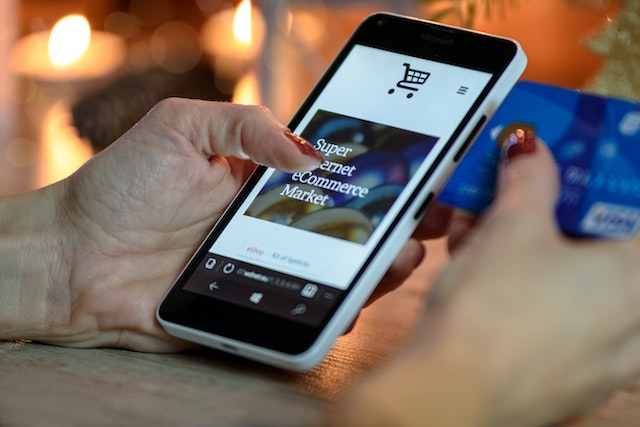The Future of Web Design in Digital Marketing

Website design is crucial to your digital business in the same way a storefront is crucial to a brick-and-mortar shop. A shabby outward appearance will dissuade customers from going into a store before they’ve even had a chance to view the products. Similarly, a poorly designed website will deter viewers from reading about your products or services before they bounce off your page.
As many as 75% of consumers admit that they make snap judgments about a brand’s credibility based on how their website is designed — and they do it in as little as 10 seconds. Think about that. Ten seconds is barely enough time to take in your header copy, let alone browse your services. It is enough, however, to get a sense of how your website is laid out.
Before you can sell something to your customers, you have to reel them in. Read on to learn about website design trends and innovations likely to shape this function over the next few years.
Customer Experience Will Be Key
Ultimately, web design is about enhancing customer experience (CX) so that they progress further along the marketing funnel. CX is the one constant in the debate of traditional marketing vs. digital marketing. It’s why in-store assistants exist — to improve customers’ experience in the hopes of selling them something.
In fact, 88% of online consumers will avoid returning to a website where they’ve had a bad experience. Everything from your website’s wireframe to its navigation, color palette, copy, and accessibility influences a user’s experience. When you’ve taken the time to get everything right, it shows in your bounce and conversion rates. Users will spend longer on your website, giving you more time to tempt them into a purchase.
Future Trends in Web Design
These are some of the key trends you can expect to influence web design over the coming years.
1. Seamlessly Responsive

A big part of user experience is the website loading correctly and in an accessible way on all devices.
Eight out of ten visitors will leave websites that don’t display properly on the device of their choice. What’s more, over 50% of web traffic comes from mobile devices. This means that if your website isn’t customized to display well on smaller screens, you’re losing out on the majority of your prospects before they’ve even gotten to know you.
Additionally, high bounce rates from non-responsive websites will adversely impact your search ranking, making your website harder to discover for users in the future.
2. SEO-Driven Web Design
Outside of responsiveness, there are many ways that website design is linked to SEO performance. For instance, according to Google, if your website takes longer than three seconds to load fully, people are likely to bounce off the page.
Google’s algorithm is configured to take into account web design elements like speed and device optimization but also navigation, site structure, intrusive elements like pop-ups, and content quality among others. There’s a lot that goes into creating a website that looks good, ranks highly, and converts well.
If you’re just starting out with your digital presence, it might not be a bad idea to enlist the services of a custom web design company to help you get everything right.
3. Enhanced Accessibility
A website’s accessibility is a measure of how well it’s optimized for convenience and differently-abled persons.
There are a number of ways you can do this. For starters, build your website so that it’s screen-reader-friendly, making it easier for visually challenged people to peruse it. You’ll also want to optimize your media, including having subtitles for website videos and avoiding distracting effects. Also include audio descriptions for graphics and alt tags for images.
Finally, consider integrating voice search functionality into your website. Voice search offers your users a touchless and more convenient browsing experience, especially while they’re multitasking. This has been a huge trend in recent years with the proliferation of voice assistants like Apple’s Siri, Amazon’s Alexa, Samsung’s Bixby, and Google Assistant.
4. Hyper-Personalization
The trend of personalization has been a long time coming. Over 70% of customers are frustrated when they encounter non-personalized web content. Users, especially digitally-native ones, are inured to generic, mass-produced experiences. They prefer to patronize brands that speak to them and their individual needs.
Companies like Google, Amazon, and Netflix are industry leaders in this sense with suggestions for everything from content to products personalized for users based on their past behaviors.
Data is key when you’re trying to personalize your website. Characteristics like users’ age, location, and purchase history can help you better target your customers. You can also rely on website layout and navigation to segment your services for visitors.
5. AR and VR

Augmented and virtual reality are rapidly revolutionizing users’ online experiences, including the way they shop, but also the way they access education, healthcare, and content among others.
This is another trend that was catalyzed by the pandemic when social distancing was a priority. People preferred to experience their products and services remotely and then simply got used to the convenience.
Optimizing websites for augmented and virtual reality offers a unique challenge. The website needs to be compatible with a range of new technologies like WebGL and 3D rendering APIs as well as account for interaction with the physical world outside the device, all the while delivering a positive user experience.
6. Automation
As you run through your website design process checklist, make sure you account for compatibility with automation tools like chatbot support and machine learning software.
The pandemic hugely accelerated automation implementation in websites, especially e-commerce ones. One big reason for this is the necessity of 24/7 customer support worldwide. Not every business can afford to have live representatives for customers across every time zone. An excellent alternative is AI-enabled chatbots that can field an increasingly diverse range of queries and provide automated support in the moment.
If you do happen to have an ecommerce website, automation will also help you build personalization options for various customers on the fly as they’re browsing through your store.
Users will continue to want more meaningful and immersive experiences as they browse online. Web design can deliver these by understanding what inspires their customers and deploying technology to help them come up with creative solutions. As with everything digital, adapting to advancements and innovations will be key.

 @themolitor
@themolitor